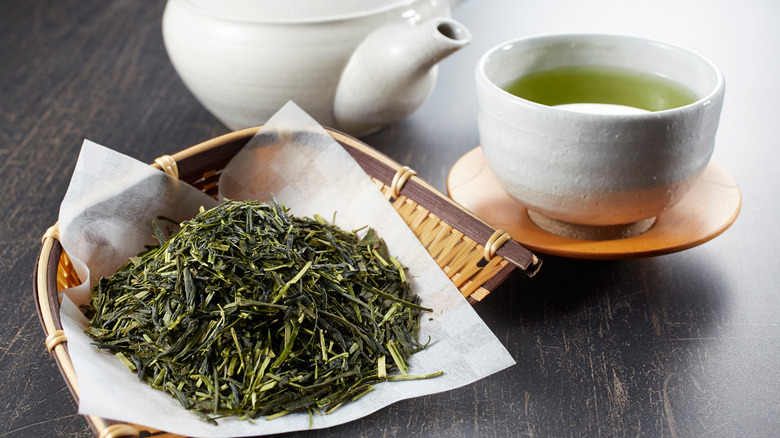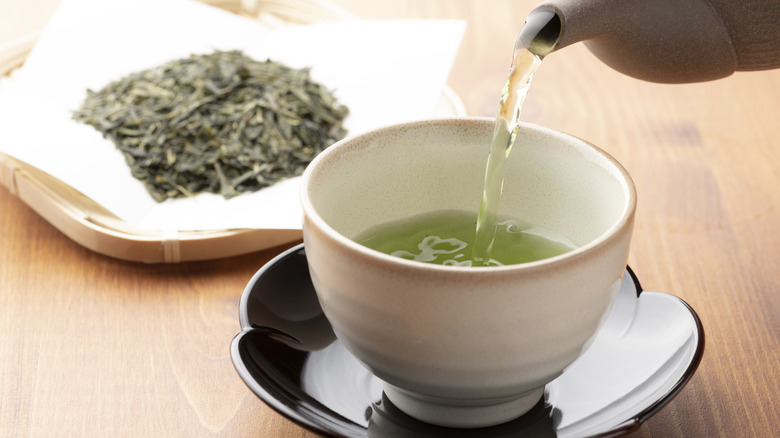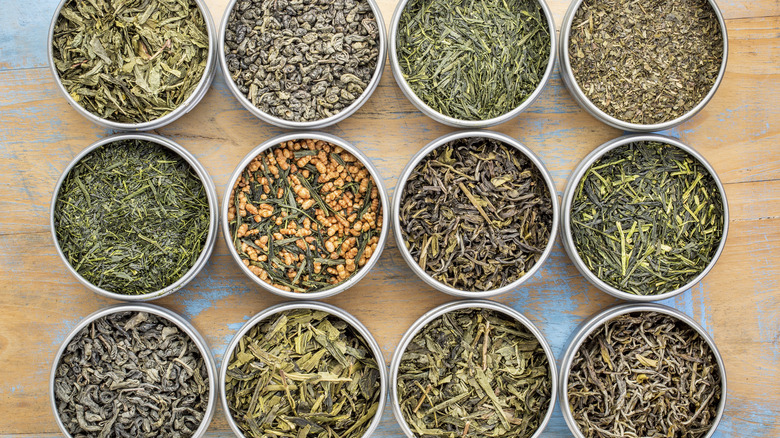What Is Sencha, Japan's Most Popular Green Tea?
According to the National Coffee Association, more than 64% of Americans need at least one cup of coffee at some point during their day. However, in Japan, you're more likely to find folks reaching for a teapot in the morning.
Sakura Colorado claims that Japanese people drink green tea in the morning instead of coffee for its nutritional benefits. Healthline echoes that sentiment, stating green tea is known for many miraculous things it can do for your health. It's been shown to help manage weight, improve heart health, and contain tons of cancer-fighting antioxidants as well.
The drink has long been important in Japan, though its arrival in the country seems late compared to tea's ancient roots. Tea has been available in China for millennia but only came to Japan in the late 1100s, per Valley of Tea. The monk Eisai brought tea seeds from China, and the culture of Japanese tea drinking was born. Nio Teas says that Matcha tea was the most popular way to consume tea in Japan, but that all changed with the invention of sencha, which would eventually surpass matcha to become Japan's most popular variety.
History of Sencha Tea
The Japanese Green Tea Company says that sencha means "roasting/simmering tea." It was given this name because simmering whole tea leaves in water to produce a beverage was significantly different from adding warm water to the fine powder required to make matcha. Path of Cha claims that this method was introduced to Japan in the 17th century by a monk named Ingen. It was then popularized by a Kyoto tea seller known as Baisao. He hated the formal treatment of tea and used sencha brewing as a way for the common person to enjoy the beverage of the elites in a simple manner.
Nio Teas adds that a tea farmer named Nagatani Soen (who The Japanese Green Tea Company says knew Baisao) developed a form of preparation where tea leaves are steamed and rolled into tight spirals. This locks in the flavor and nutrients and keeps them well-preserved until they are ready to be prepared.
Green Tea Merchant Blog points out that this steaming method defines the modern forms of sencha tea and gives it a unique flavor compared to other toasted varieties of tea leaves.
Varieties of sencha tea
According to Green Tea Merchant Blog, the steaming method used to preserve sencha tea tends to give it a bright, grassy aroma and a refreshing taste. However, Nio Teas adds that it's common to encounter variations in sencha tea depending on how the tea was grown. Like all green teas, sencha comes from picking young tea leaves that haven't fully matured yet. The amount of direct sunlight or shade these leaves are given, though, will directly affect their flavor.
Nio Teas claims that unshaded sencha teas are known to have a bitter flavor profile. If a farmer chooses to shade the leaves for less than ten days before harvest, they will contain more of a compound known as theanine. This compound gives the leaves a sweeter flavor that can help to balance the bitter notes. Kabuse sencha is the most shaded form of sencha, and it is usually shaded for some time between ten and 21 days before harvest and will have the sweetest flavor.
There is also gyokuro tea which is grown entirely in the shade, which means that the leaves barely mature. While Nio Teas may not consider gyokuro a sencha tea, it admits that its unique blend of sweet and savory flavors makes it one of the most sought-after teas in Japan.


